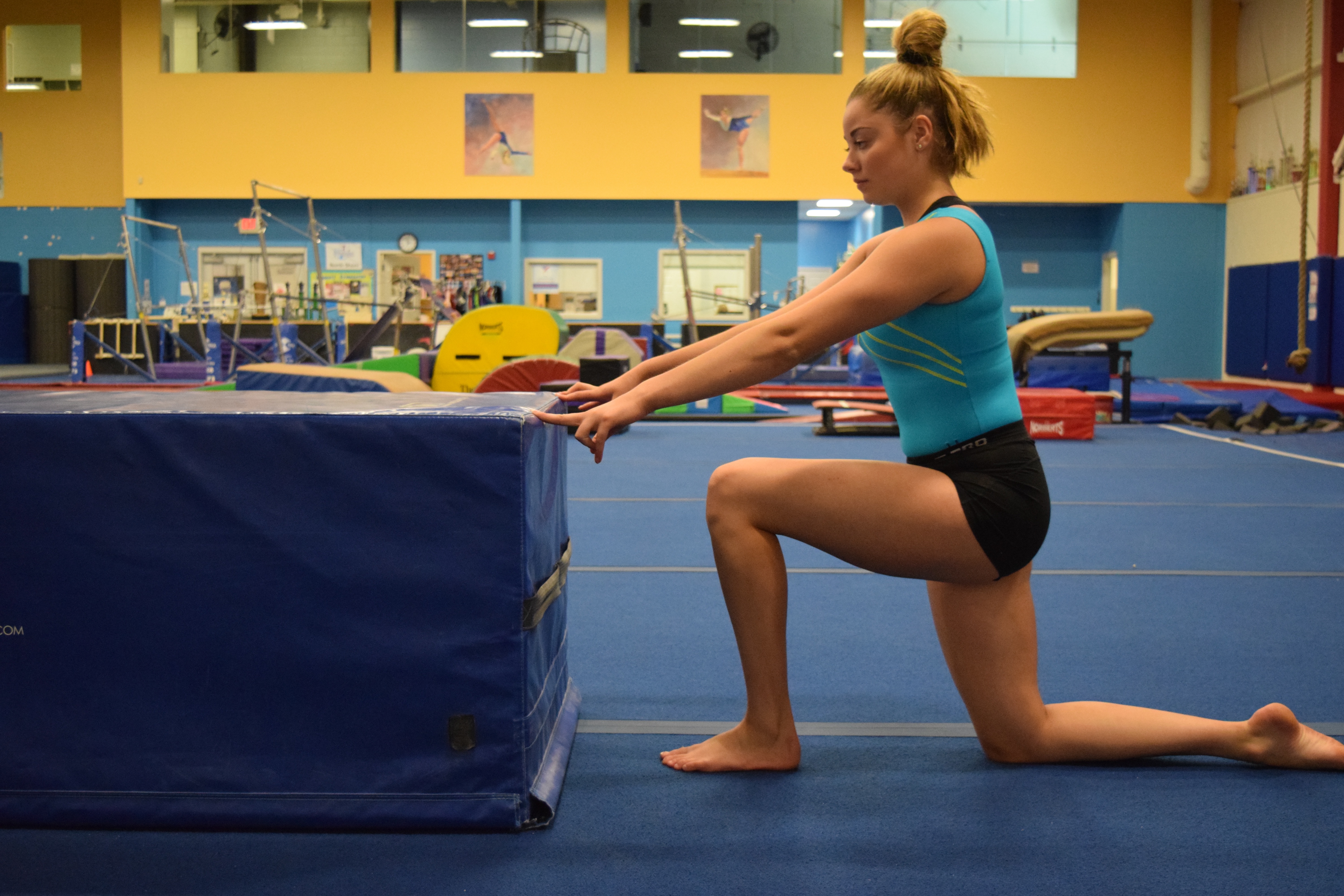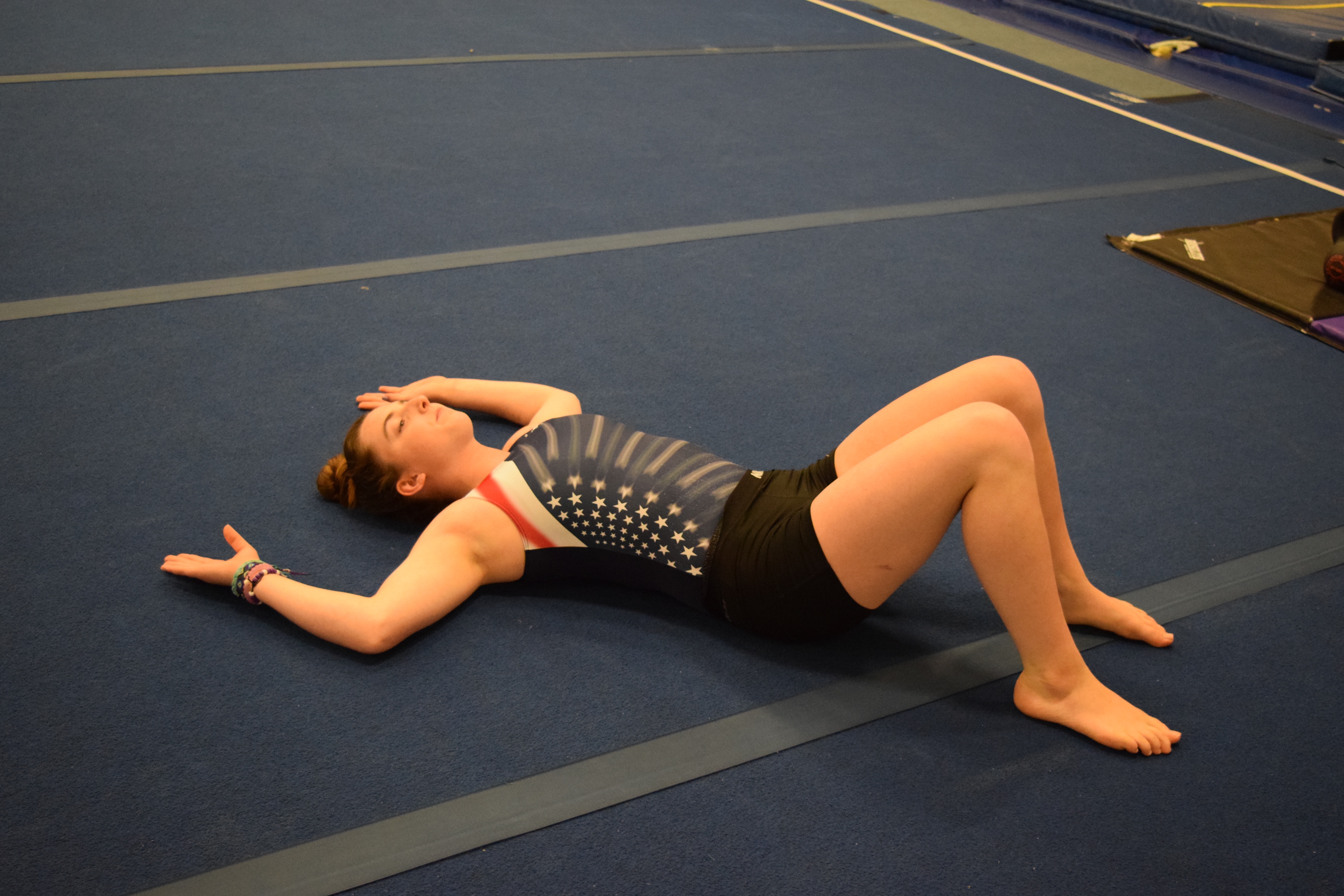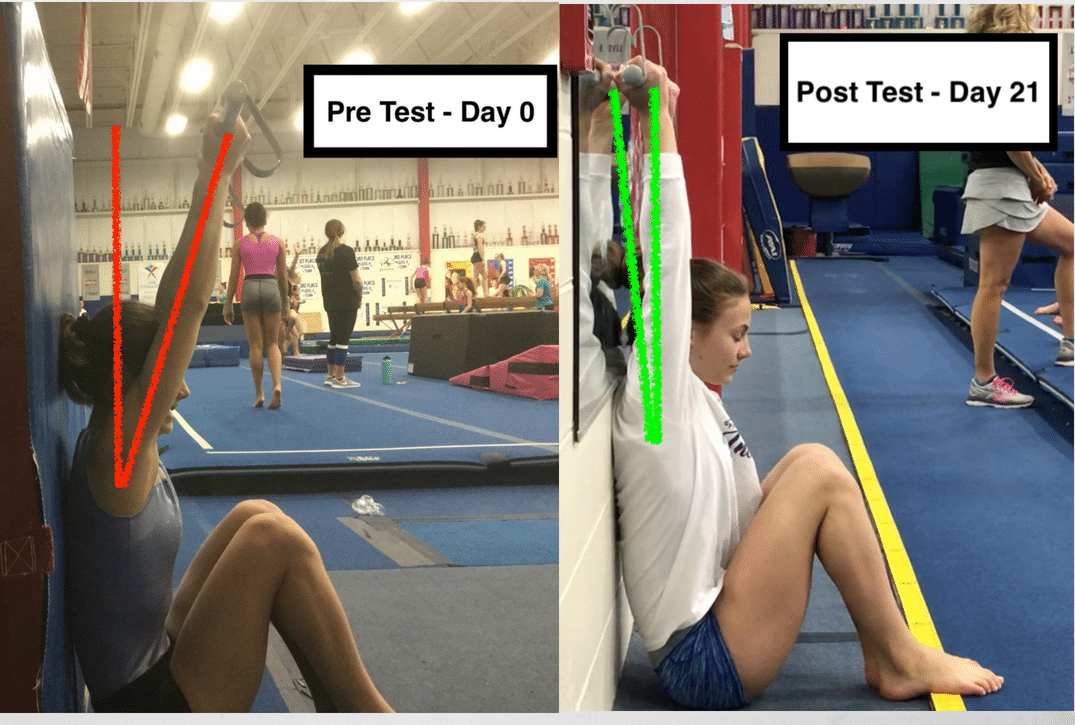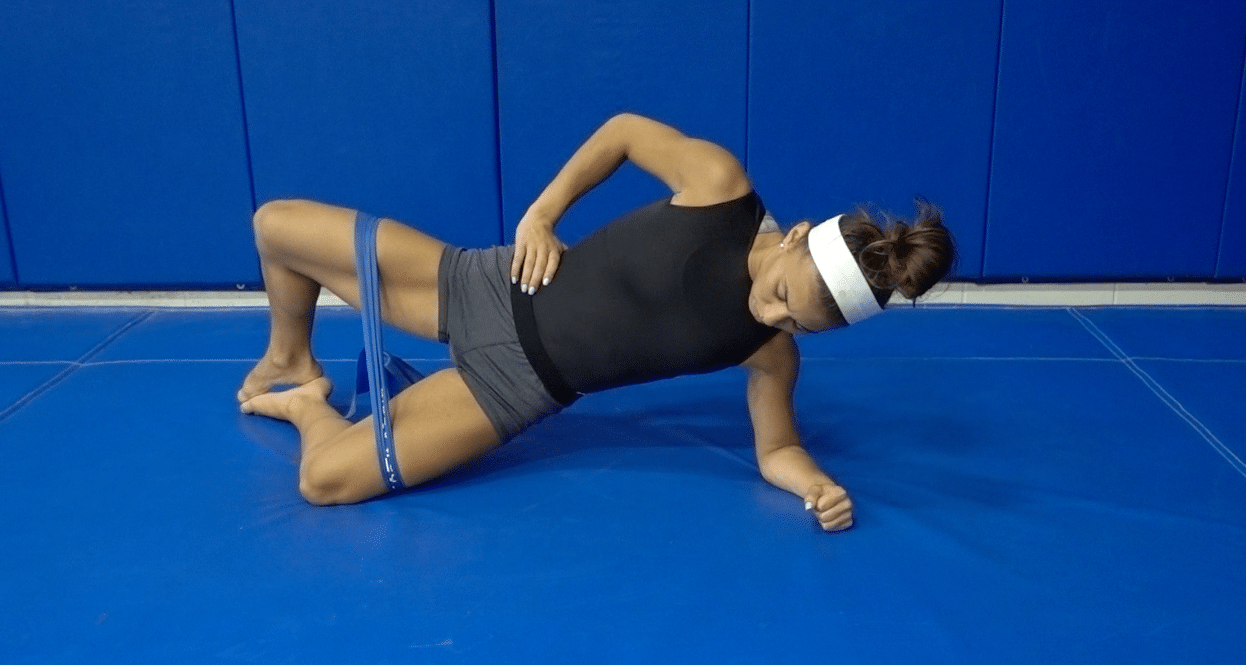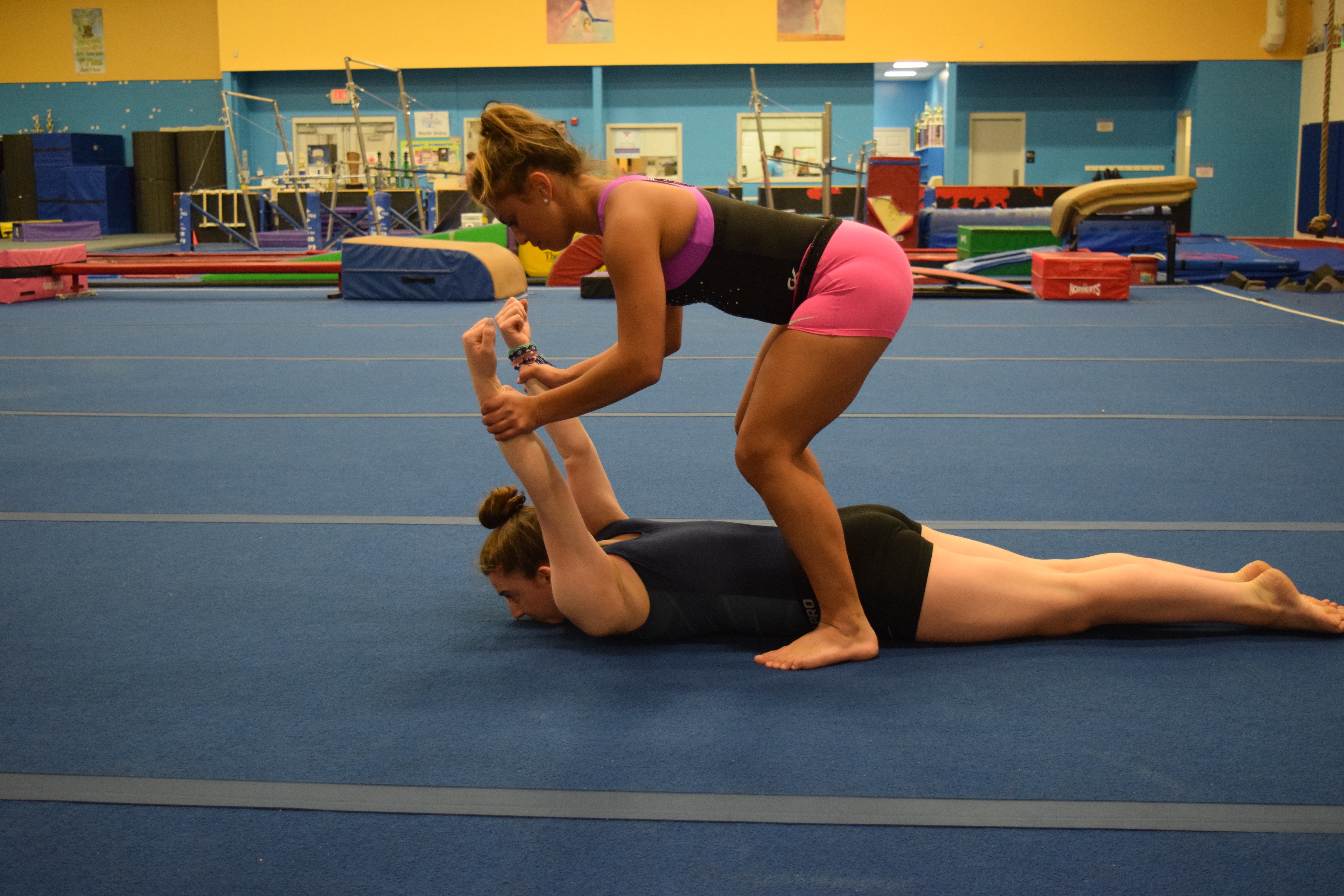7 Must Use Gymnastics Shoulder Flexibility & Strength Exercises
Having fully flexible, strong, and stable shoulders is essential in gymnastics. This is for both skill performance, but also health and reducing the risk of overuse injuries. So many gymnasts struggle with a limited range of motion, limited blocking shape, and rotator cuff or labral injuries. In this blog post, I will share 7 areas that I find are the most helpful to increase shoulder performance in gymnasts, as well as my favorite exercises to use.
Before we dive in, if you work in gymnastics in any way you will not want to miss out on our epic 2023 SHIFT Symposium coming in June where we will have 30 lectures from 30 experts breaking down skill techniques, drills, progressions, strength programs, injuries, mental blocks and more. Learn more and secure your tickets below!
Table of Contents
1. Lat/Teres Major Soft Tissue Care
One essential aspect of shoulder care is focusing on the soft tissues surrounding the shoulder joint, specifically the latissimus dorsi (lat) and teres major muscles.
The latissimus dorsi is a large muscle that spans from the lower back to the upper arm and plays a significant role in shoulder extension, adduction, and internal rotation. The teres major, located beneath the lat, assists in shoulder adduction and internal rotation.
To optimize shoulder performance for young athletes who are growing, it is important to prioritize the care of these muscles. Incorporating soft tissue mobilization techniques such as foam rolling, massage, and active release can help alleviate muscle tension, improve flexibility, and enhance blood flow to the area. I personally like using a foam roller for the lats, and a lacrosse ball at the wall for teres major every day for 60 seconds.
2. Overhead Flexibility Stick Stretch
Having adequate overhead flexibility is crucial for gymnasts to perform skills that involve raising the arms above the head, such as handstands, vaulting, and giants or releases on bars. The overhead flexibility stick stretch is a great way to target the soft tissue noted above, without putting to much pressing on the joint capsules. Be sure to keep the hands wider than the elbows, keep the upper back rounded, and to maintain full breathing.
3. Scapular Horizontal Rowing Strength
The scapula, or shoulder blade, plays a crucial role in stabilizing the shoulder joint during gymnastics movements. Specifically the middle trap, rhomboids, lower trap, and posterior rotator cuff. Developing scapular horizontal rowing strength can significantly enhance shoulder performance and prevent imbalances or instability.
I personally find that feet-elevated horizontal rows and renegade rows are the most effective bang for your buck. I would do 3-4 sets of 8-12 2x/week.
4. Rotator Cuff Direct Strength
The rotator cuff is a group of four muscles (supraspinatus, infraspinatus, teres minor, and subscapularis) that stabilize the shoulder joint and facilitate controlled movement. Building rotator cuff strength is essential for gymnasts to maintain shoulder stability and prevent injuries.
Exercises targeting the rotator cuff can be performed using resistance bands, dumbbells, or cables. Examples include external and internal rotation exercises, as well as shoulder abduction exercises. Based on great EMG research, side-lying dumbell external rotation, prone T’s, prone Y’s, and standing full cans are the best starting point.
Shoot for 2 sets of 10 2x/week with a weight that is challenging enough and increase weight 1lb/week.
5. Single Arm Pressing Exercises
Gymnastics often requires single-arm movements, and upper-body strength imbalances can hinder performance and increase the risk of injury. Incorporating single-arm pressing exercises can help address these imbalances and improve overall shoulder performance. I personally find gymnasts only do bodyweight exercises, which have their place but lack the use of external load.
The exercises I like to use are single-arm landmine presses or half-kneeling overhead presses These again can be done via 3-4 sets of 8-12, and are particularly great for the off-season.
6. Overhead Kettlebell Dynamic Stability Drills
Dynamic stability is vital for gymnasts to maintain control and precision during complex movements involving overhead positions. This helps the rotator cuff learn to work together with the rest of the shoulder musculature. Overhead kettlebell dynamic stability drills such as overhead carries and Turkish Get Ups. can help improve stability and coordination in the shoulder girdle.
7. Gymnastics-Specific Technique & Shaping
While all of these things are great to create a base, the reality is it must transfer to gymnastics-specific movements. Without this, it might be a lost point for all the build-up. While specific coaching techniques are best to tailor the exercise to each gymnastics, two personal favorites of mine are the 3-step handstand walk drill and wall-facing floor bar walks.
Conclusion
Optimizing shoulder performance is crucial for gymnasts to excel in their sport while reducing the risk of injuries. Incorporating a comprehensive approach that includes soft tissue care, flexibility exercises, strength training for the scapular and rotator cuff muscles, single-arm pressing exercises, dynamic stability drills, and a focus on gymnastics-specific technique and shaping can significantly enhance shoulder function.
If you enjoyed this content and want more, again make sure to sign up for the 2023 SHIFT Symposium coming in June where we will have 30 lectures from 30 experts breaking down skill techniques, drills, progressions, strength programs, injuries, mental blocks, and more. Learn more and secure your tickets below!
Hope this helped!
– Dave Tilley DPT, SCS
CEO/Founder of SHIFT Movement Science




